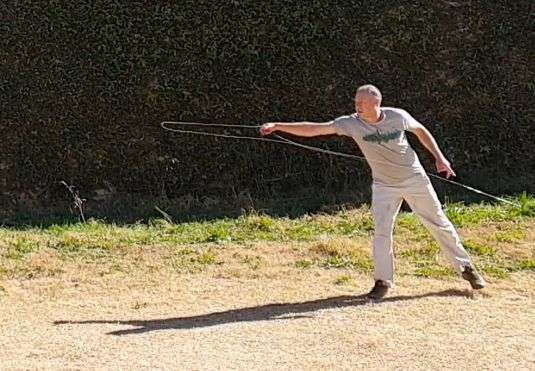For an untethered cast, you have 2 unknowns (legs speed) and two equations (energy, momentum).
Merlin,
Does the drag on the two legs and the loop not enter into your analysis? I would not expect momentum to stay the same since the line has outside drag forces acting on it.
Does that mean when the loop rolls out to the point where the rod leg is longer than 25% of the fly leg length then the tangential velocity of the line going around the loop will start to decrease and eventually kill the turn over?As I said before, the rule of the thumb is that the rollover goes on if rod leg is about 25% of fly leg.
What determines that 25% factor? looks to me that the rod leg is much less than the fly leg length shortly after the release in Dirk's dud casts.

Maybe Dirk can get an estimate of what the relative lengths were at the point of release for the case where the narrow loop turned over and compare it to the lengths for his dud casts.
Since the nominal rho_l*v_tangential\(^2\) tension at the top and bottom of the loop is independent of loop radius why do you think needle nose loops tend to roll out and wider loops do not for non-tethered casts?
Gordy



